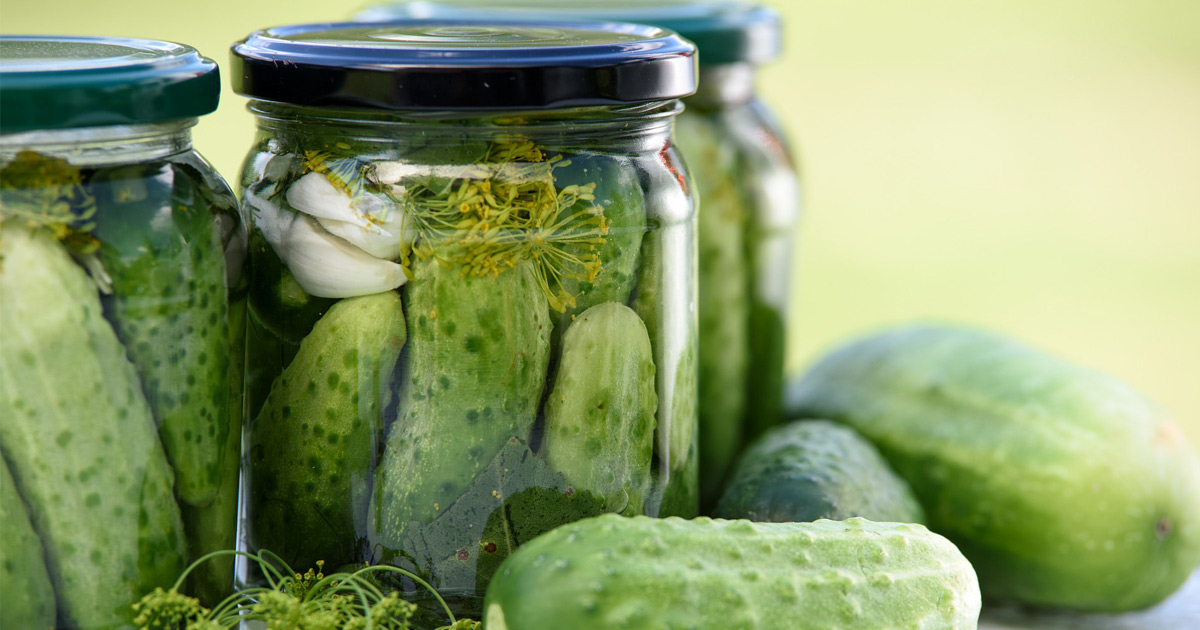Freezing
Most types of foods freeze exceptionally well, but there are a few exceptions such as cream based items and produce containing a lot of water. Some cooked foods may also deteriorate after time spent in the freezer. However, properly frozen food can be stored for months or years, depending on the type of food. Make sure you use sealable and durable eco-friendly packaging such as silicone bags. If you use a container check that it is moisture-resistant, durable, leak-proof and easy to seal.Pickling
Many types of fruits and vegetables can be pickled and saved for a tasty snack. Submerge vegetables or fruits in a brine and chill for a week. Pickled produce can spice up any meal, like sauerkraut on a hot dog or pickled ginger on sushi. To "kill two birds with one stone" use your pickled products to make drab leftovers exciting again. Pickling is essentially a type of fermenting achieved by fermenting foods in an acidic liquid. The list of possible pickled foods is nearly inexhaustible but here are some common ones: cucumbers, jalapenos, olives, asparagus, ginger, onions, carrots, radishes, apples, snap peas, garlic, avocados, and even eggs. Pickled goods generally stay fresh for around two months in the fridge

Fermenting
Fermenting is one of the most challenging ways to preserve food at home, but also the most fun. Some types of fermentation are easier than others. Beyond basic fermented vegetables, fermentation is the secret sauce behind many of our favourite foods.Dehydrating
Even without any fancy tools, dehydrated foods are simple to make and provide one of the best tricks to extend the life of food. Here are a few ways you can go about preserving some of your favourite foods. With an oven, you can dehydrate vegetables, apples, blended fruits (for fruit leather), bananas, and even meat. With a dehydrator you can make dried fruits, dried kale chips, dried broth, dried granola, homemade tempeh. You can also capture the sun to dehydrate foods by making your own DIY solar-powered dehydrator.Canning
There's a reason why doomsday preppers usually have loads of canned goods. Canning works by heating foods in jars to a temperature that kills microorganisms that could pose health concerns, while also inactivating enzymes that cause food spoiling. We're admittedly not canning experts by any means, but here are a few safe canning methods to get you started. Boiling water bath method works for foods high in acid (pH of 4.6 or less). Pressure canning method can be used for everything else. Steam canning works like a water bath, but prepared jars are put on a rack above water and the steam treats them.Juicing
Most expired fruits and vegetables can be given another couple of weeks of life by juicing them. Use these juices in smoothies, soups, kombucha, or just to drink. The only hitch to this method is that you'll need a blender or juicer.Curing
Curing is one of the oldest methods for preserving food. Ingredients can be rubbed directly onto the surface of the food or dissolved in water to create a brine. Some may also choose to inject brine into the muscle of large cuts of meat. This minimizes the moisture in the meat, which takes away the conditions required for bacteria to grow. To get more detailed information about the methods of preserving food please visit: sustainablejungle.com Pat yourself on the back because now you know more about the different methods of how to preserve food at home! Ultimately, the best preservation strategy is to not need one and only buy food you're sure you're going to eat.SIGN UP FOR OUR NEWSLETTER
Source: Preserve our Planet by Knowing How to Preserve Food at Home; https://www.sustainablejungle.com/sustainable-living/how-to-preserve-food-at-home/ [Accessed 2 June 2021].The information contained herein is for general information purposes only. APS Bank plc will not be held responsible or liable in any manner for any of the information contained herein. While APS Bank plc has made every attempt to ensure that the information contained herein has been obtained from reliable sources, APS Bank plc will not be held responsible for any errors, omissions or inaccuracy, or for the results obtained from the use of this information. The primary purpose of these articles is to educate and inform. These articles do not constitute legal, medical or professional advice or service.

